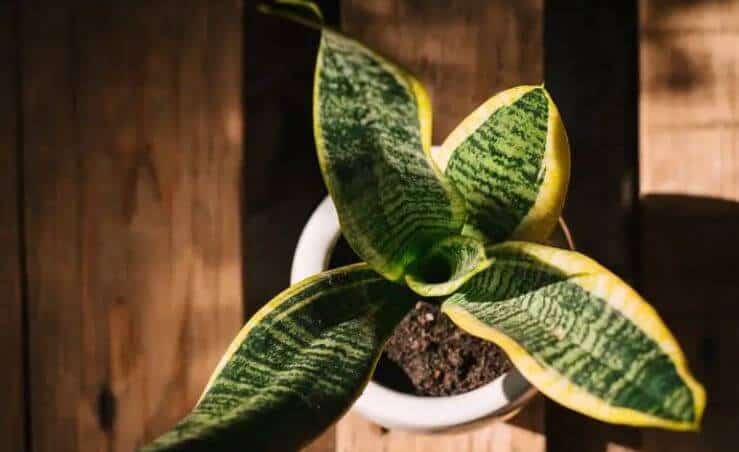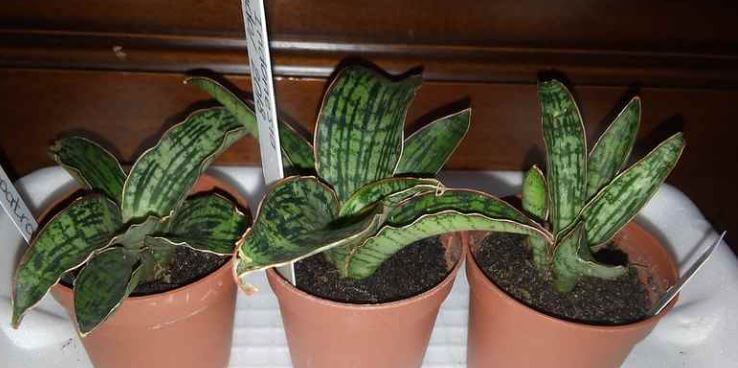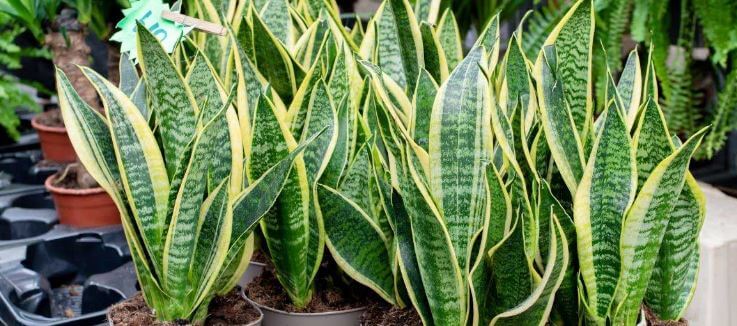Last Updated on August 31, 2023 by a Friendly Gardener
Among the most popular houseplants on the planet, the undemanding South African-native Sansevieria or Dracaena trifasciata, with its sculptural quality and innate resilience, can be enigmatic when it comes to watering: too much, too little, none? Commonly referred to as ‘mother-in-law’s tongue’ or the ‘snake plant,’ these plants can go quite a while without watering and suffer from overwatering.
Improper watering is the leading cause of snake plant death, usually due to overwatering. Severe overwatering can result in a fatal case of root rot.
How Long Can My Snake Plant Go Without Water?

Snake plants are living creatures and, as such, do need water. Even if they require less water than other houseplants, they still need care to thrive. This houseplant, classified as a succulent, has some robust survival characteristics. They can survive for approximately two weeks to a month without water because they store sufficient water.
Appreciated for their sword-shaped foliage, their leaves prevent water loss during periods of drought. Elegant as a décor accent wherever you place them, the foliage is the secret of their viable water storage.
Why Are Snake Plants Able to Go So Long Without Water?

Snake plants require less watering due to some innate qualities. To begin with, they store water in their foliage whenever there is an opportunity. It’s important not to leave them sitting in damp soil beds as there is no need, which can compromise their health and even open the door to root rot.
Providing excessive water to a Snake plant will negatively affect its appearance and growth. The amount of water stored in leaves helps them to survive a period of drought or neglect.
The Sansevieria can also adapt to seasonal changes; however, they prefer the warmer seasons. Cooler seasons are more stressful, and excess watering in lower environmental temperatures will jeopardize their well-being. During the cooler months, a monthly watering should be more than adequate because they retain enough moisture to meet their survival needs.
If you need more clarification about whether to water and to establish a snake plant watering schedule, look to the soil. If it appears and feels dry, go ahead and water it. One thing to avoid is soaking your snake plant. Do not submerge your plant and container in water, as this will increase the chances of root rot developing.
Environmental Conditions, Light, and Humidity

Environmental temperatures should never fall below 50°F, as a rule. Warmer temperatures will make them more comfortable. Ideal temperatures should measure between 55° and 85°F. Cold environments can lead to browning foliage and soft or mushy foliage because the colder climate has caused tissue damage to your plant. If you have a sunny spot, the Sansevieria will appreciate being there.
Light is another essential element to a Snake plant’s health and growth. The amount of light your plant receives will also influence the amount of water the plant needs. Snake plants will thrive in both natural and artificial light. These plants can adapt to low-light, medium-, or high-light conditions and thrive. They will also adjust to artificial lighting, including fluorescent, halogen, incandescent, or LED. It stands to reason that their water requirements will decrease in low light conditions.
They require indirect light, as placing them too close to direct sunlight can cause foliage to become sun-scorched, further complicating your watering routine. In direct sunlight, evaporation will occur more rapidly, increasing the need for frequent watering.
Humidity considerations should also be included in your care routine. If the air is exceptionally arid, the plant will, at some point, suffer, even if it is a desert plant. If the air is too humid, the plant’s susceptibility to diseases, especially mold infections, can increase. If your snake plant is watered correctly, it should manage even when humidity levels fluctuate. However, the higher the indoor humidity, the less you need to water.
Can Snake Plants Survive Without Water?

No, they cannot. Living creatures must have water even if they exhibit a specific drought resistance. Paying attention to water needs during the summer or hotter months is vital. Depending on temperatures, they may need watering as often as twice weekly as the soil bed will dry faster, and they may lose water more rapidly.
When drought extends longer, foliage will begin to dry out and wither. The vivid green foliage will gradually turn brown, and leaf edges will look as if they have been scorched.
Snake Plant Care

Snake plants do not require daily watering and will suffer from so much moisture. This plant actually uses very little water. Always allow your snake plant’s soil bed to dry out entirely before watering afresh. Usually, a watering every two weeks will suffice, but check the plant’s soil bed to be sure before watering. If the top two inches feel dry to the touch, then you can water.
Should snake plant foliage split or crack, do not assume it is due to dryness. Cracking and splitting result from too much water, and overwatering is the principal issue when a snake plant takes ill. The plant will absorb too much moisture, and the leaf’s outer skin will not have the ability to expand enough so that it will crack or split open.
Cultivating a snake plant indoors will usually impede blooming.
A Final Thought
Every indoor gardener eventually faces a watering dilemma. How much water should I provide my plants, and how often? Snake plants are no exception. Often, we overwater due to a desire to nurture and care. Snake plants require very little moisture as they store their supply in their leaves. It’s better to underwater rather than overwater.
When caring for and creating a watering schedule for snake plant, it’s equally important to evaluate environmental temperatures and light, which are equally crucial to your snake plant’s health. Warm temperatures, moderate lighting, and the occasional watering are the key to enjoying this exquisite houseplant.

